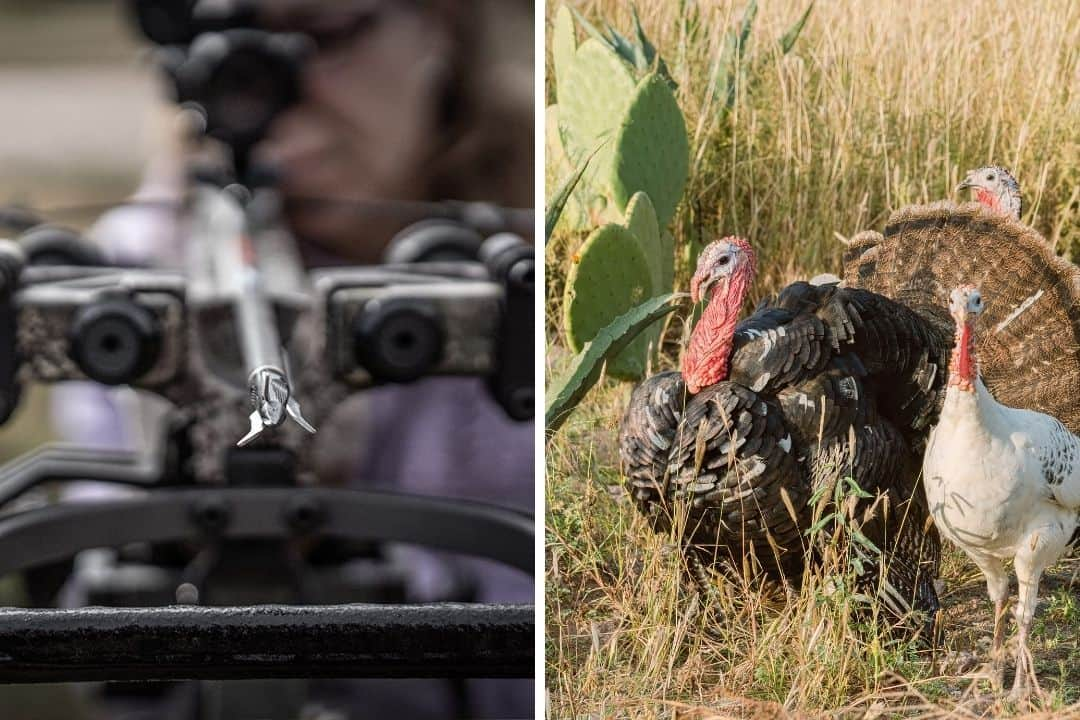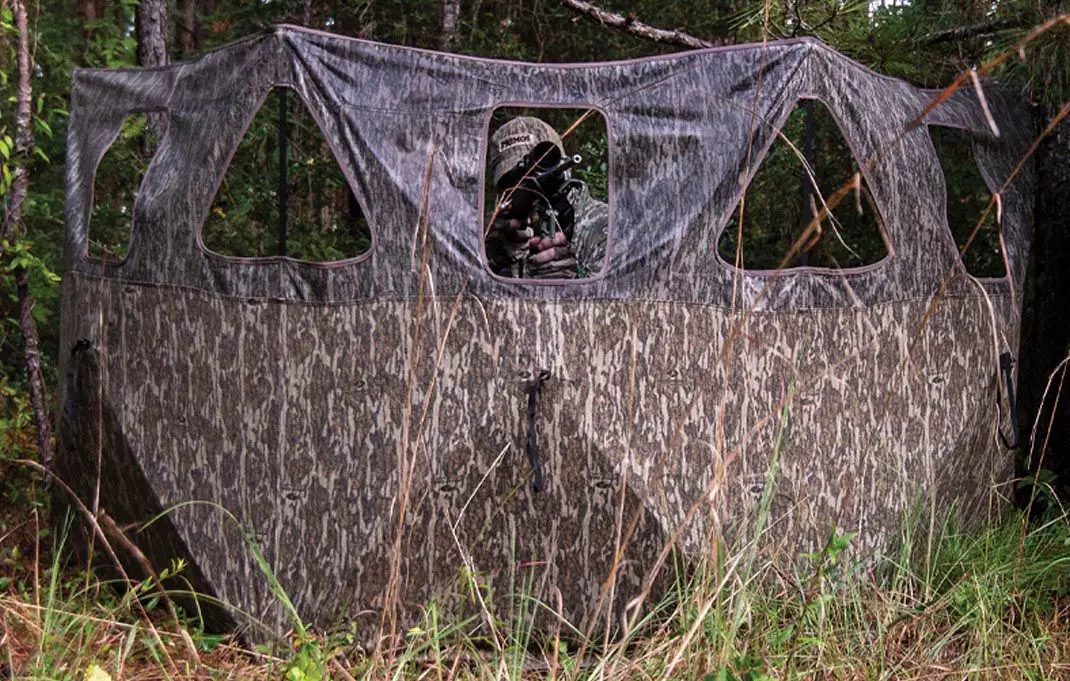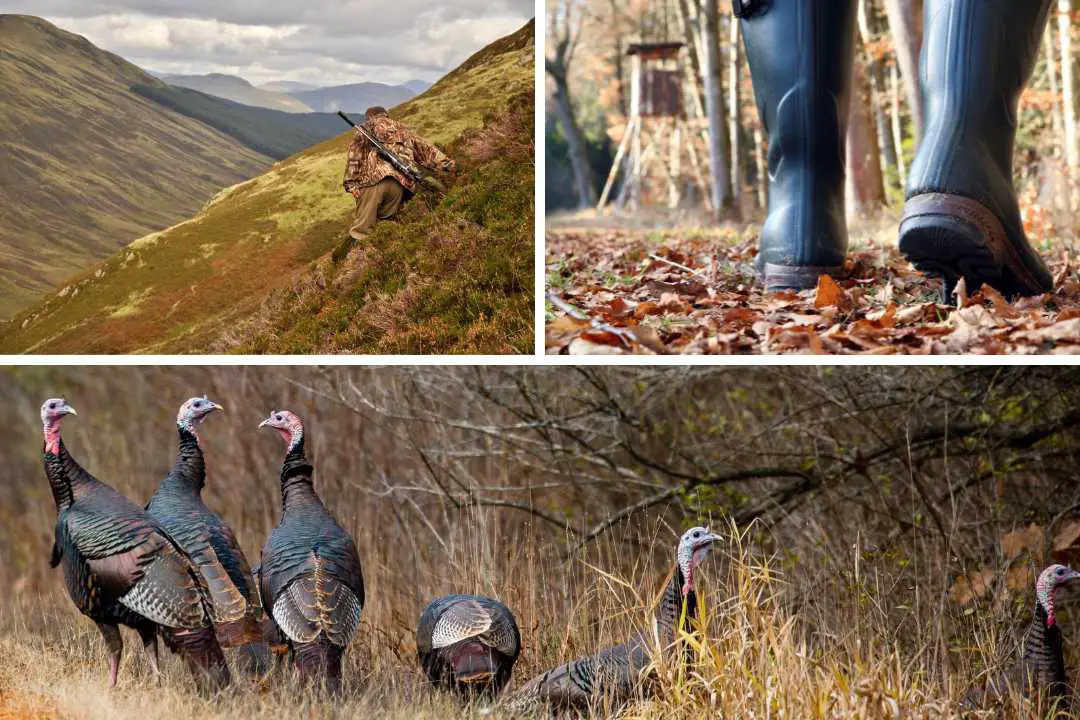What Colors Should You Avoid for Safe Turkey Hunts? The Essential Answer
What colors should you avoid for safe turkey hunts? Mistaken identity is dangerous. Learn the colors that put you at risk, plus smart camo choices. Stay safe out there!
We all know blaze orange is a no-go for turkey hunting. But those gobblers have eyes that see the world way different than ours.
That camo shirt that looks perfect to us? Might be screaming "shoot me" to a turkey.
It's time to break down the colors that truly keep you safe – a mistake many hunters make, even seasoned ones.
Think it can't happen to you? Let's talk about why it might...
What Colors Should You Avoid When Hunting For Wild Turkeys?
Ditch the blue jeans and red bandana! Avoid blues, reds, whites, and UV brighteners. These mimic a gobbler's head or stand out to their superior vision.
They might see you as a rival or even prey, putting a damper on your hunt (and potentially causing a dangerous situation). Plus, other hunters rely heavily on color to identify targets - avoid becoming a case of mistaken identity!
Think Your Camo is Enough? Most camo blends in with the human eye, not a turkey's!
We'll break down what they ACTUALLY see and how to choose camo that keeps you hidden (and safe) throughout the hunt. Plus, discover how terrain and movement factor into the equation for ultimate concealment.
The Danger Zone: It's Not Just About What You See
Dispelling the Camo Myth: Most of us picked our camo based on how well it blends into our favorite hunting spot. But turkeys don't have human eyes. Their color perception goes way beyond ours, including these problem areas:
- Blues, Reds, & Whites: These match the vibrant colors on a gobbler's head in strut. It doesn't matter if it's a shirt, bandana, or even the buckle on your boot – risk of being mistaken for prey goes sky-high.
- The UV Factor: A lot of laundry detergents have UV brighteners. Seems harmless, but to a turkey, your gear glows an unnatural blue-white – practically giving yourself away, even with full camo on.
Beyond the Basic Colors: How Turkeys See Patterns
- Contrast is King: That camo pattern that breaks up your shape to the human eye? To a turkey, it might be a solid dark blob if the contrast is too low. Prioritize patterns with both light and dark elements for true concealment.
- It's About the Eyes, Not the Brain: Gobblers react instinctively to certain shapes and colors. Even if they intellectually know it's not another turkey, those blues and reds can trigger an aggression or alert response.
Safety isn't about looking cool in the latest camo. It's understanding how your quarry sees the world and choosing your clothing accordingly.
Watch Out: Camo That Backfires
The "Blob" Effect:
Many camo patterns are designed with human eyesight in mind. To a turkey, those intricate leaves and branches might blur into one solid dark shape. This stands out in the woods, especially against a light background.
High-Contrast Gone Wrong:
Some camo patterns go the opposite direction, with super high-contrast elements. While it disrupts your form, to a turkey, it might just look like unnatural, attention-grabbing flashes of light and dark.
"Realistic" Isn't Always Best:
Those photo-realistic camo patterns with super detailed leaves and bark? They often lack the subtle variations in tone that offer true blending against varied terrain.
Spot Test Your Gear:
Next time you're in your hunting spot, step back 20 yards and squint at your camo. If it stands out as a single shape or draws your eye with extreme contrast, it likely will to a turkey too.
Good Camo Isn't One-Size-Fits-All:
A pattern perfect for dense undergrowth will fail you in an open field. Analyzing your usual hunting grounds is crucial to making the right camo choice, not just relying on what looks good in the store.
Choosing camo is about more than pattern. Here's how to make smart color and texture choices for specific terrain and stay hidden throughout the hunt...
Smarter Choices: It's Not Just About Camo
The Terrain Factor: Your ideal camo shifts depending on where you hunt. Consider these common scenarios:
- Open Fields: Here, breaking up your outline is paramount. Focus on patterns with both light and dark elements, resembling natural variations in grasses and shadows.
- Dense Woods: Texture becomes more important. Look for patterns that mimic leaves, bark, and dappled sunlight, creating visual depth that helps you dissolve into the background.
- The "In-Between": For mixed terrain hunts, layering can be your best friend. A solid base layer in earth tones (browns, grays, muted greens) with an outer camo layer adjusted for the day's spot.
Don't Neglect the Basics: While those vibrant "gobbler head" colors are an absolute no, even with good camo, remember:
- Face & Hands: A mask and gloves break up your skin's outline. This matters when a gobbler's got those beady eyes locked on you.
- Footwear Matters: Brown or camo boots are ideal. Shiny black ones create an unnatural dark shape that's easily spotted, especially in low light.
Pattern Type | Ideal Terrain | Recommended Season | Potential Drawbacks |
|---|---|---|---|
High-Contrast Leaves & Branches | Dense Woods | Spring, Fall | Can stand out against open backgrounds, might be too dark in low-light |
Realistic Photo Print | Specific environments (matches your exact spot) | Varies (match to terrain) | Lacks versatility, often has limited color variation |
Mottled Earth Tones | Versatile, good base layer | All Seasons | Might not provide enough breakup in dense cover |
Open Field / Grassland Patterns | Fields, sparse brush | Spring | Can be too light for wooded areas |
Hybrid Patterns (Mix of elements) | Good all-around choice | Spring, Fall | Might not be perfect for any single terrain type |
Disruptive Digital Patterns | Various terrains | All Seasons | Can be less effective at longer ranges |
3D Leafy Patterns | Dense cover | Spring | Can snag on branches if not careful |
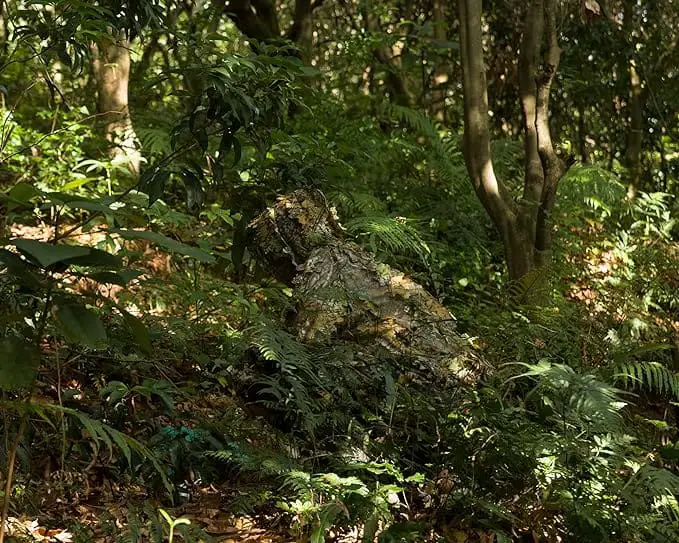
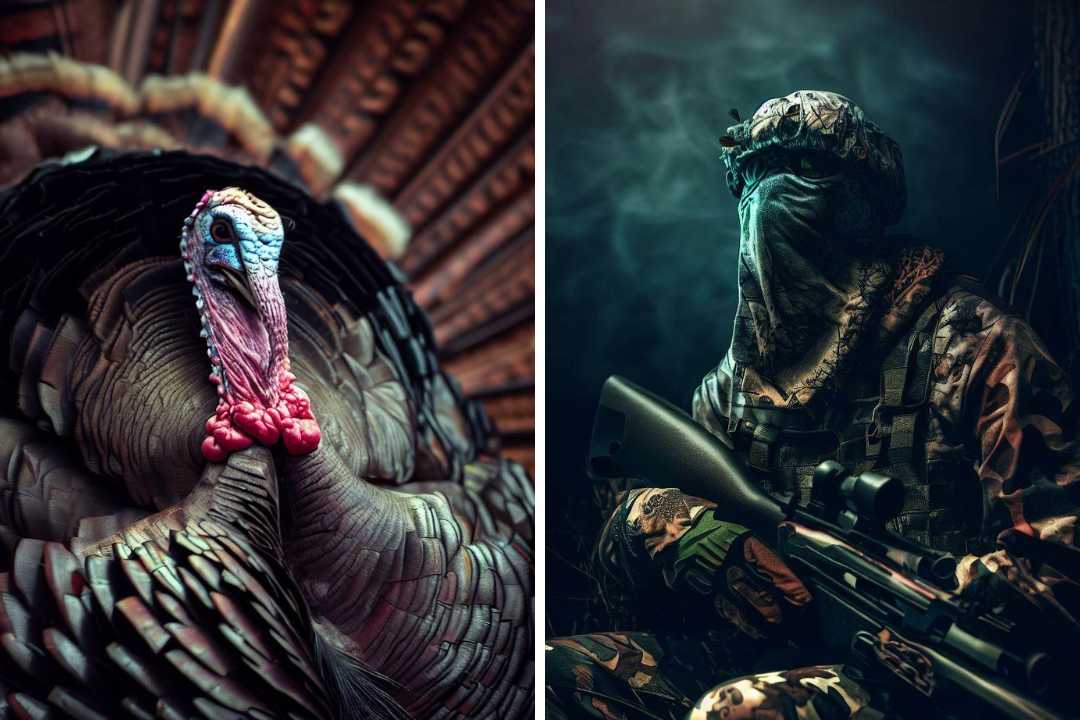
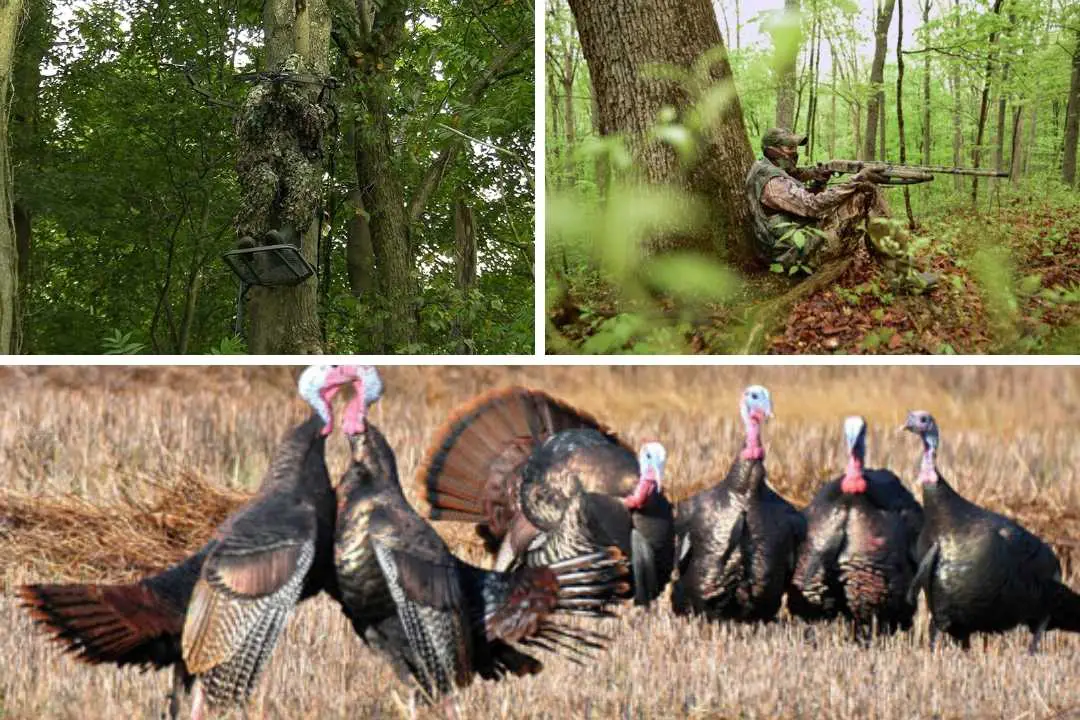
The Biggest Trap: Movement Betrays You
Even with the best camo, those beady turkey eyes will spot a sudden twitch. Here's how to master the art of stillness, making you both safer and a better hunter:
- The Head Check: Turkeys don't focus like we do. They scan by moving their heads, giving you brief windows for micro-adjustments. Watch for the subtle head dip that precedes a gobbler preening, looking away, or behind him – those are your "movement moments."
- Arms In: Tuck your elbows against your body, especially when calling. A flapping elbow as you manipulate your call is a dead giveaway, no matter how good your camo is.
- It's All About Angles: Think about the angle from where you expect the gobbler to approach. If possible, position yourself so any necessary movements are partially masked by terrain. A small shift behind a rock is less noticeable than moving in the open.
- The Shadow Dance: Pay attention to where your shadow falls. As the sun shifts, your perfect concealment spot can become a spotlight. Be willing to readjust your setup gradually throughout the hunt.
- Patience Pays Off: Yes, we say this about turkey hunting a lot, but it's especially true for safety. That itchy nose, stiff neck, or fleeting urge to shift your position – learn to suppress them for a few extra minutes. Often the gobbler will move, giving you that natural window.
Remember that turkeys see movement like we see color - it's what they're hardwired for. Here's how to minimize your risk:
- Use the Terrain: Don't just sit against a tree and hope for the best. Tuck behind natural cover (rocks, fallen logs) and break up your silhouette.
- Slow & Steady: If you must adjust, do it in tiny increments when the gobbler's head is turned or obscured. Patience is as important for safety as it is for a successful hunt.
- The Decoy Distraction: A strategically placed decoy can keep a gobbler's focus away from you, allowing for slightly more freedom of movement as you set up.
Minimizing unnecessary movement isn't about being a human statue. It's about understanding how turkeys perceive the world and using that knowledge to stay both concealed and comfortable enough for a successful, and above all, safe hunt.
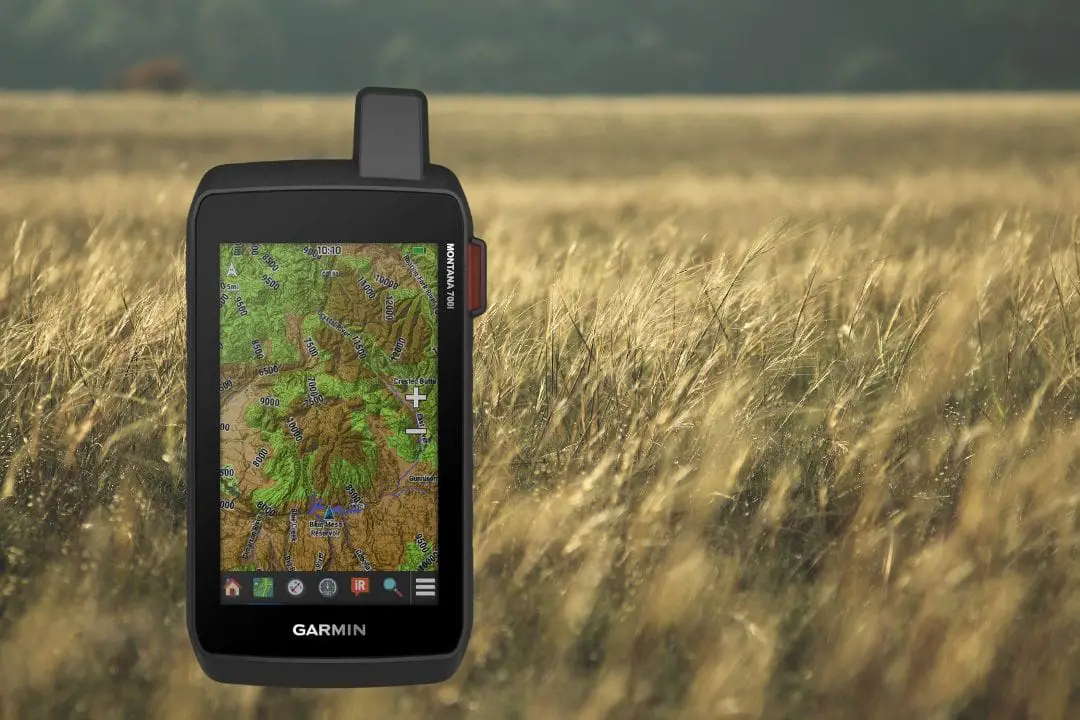
Bowhunters might have slightly lesser leeway with color due to their closer shot range. BUT, that doesn't negate the possibility of a successful hunt entirely.
Prioritize earth tones whenever possible, and pay even closer attention to those face/hand coverings since you'll be moving more at the moment of truth. Remember that your best camouflage is staying absolutely still.
Your strength as a bowhunter lies in drawing the gobbler close enough for a clean shot. Perfect camouflage lets you focus on that draw and release with absolute confidence, not worry about whether your clothing is a giveaway.
Even the most experienced hunters make mistakes. By prioritizing these safety practices, you'll minimize your risk and enjoy the challenge of the turkey hunt with greater confidence.
Final Thoughts
Think those vibrant and patriotic colors on your old hunting vest are good luck? Think again. Turkey hunting isn't about tradition; it's about adapting. That gobbler sees your "lucky hat" as a target, not a quirky superstition.
Ditch the dangerous colors, master the art of stillness, and become a true extension of the woods you hunt. Understanding their vision, and maximizing your own concealment – that's the key to outsmarting these wary birds and experiencing those heart-pounding moments of a truly successful hunt.
Ready to upgrade your camo and safety strategy? Check out our in-depth gear guides for choosing patterns, clothing, and accessories that keep you hidden, comfortable, and confident throughout turkey season.
If you have your own hard-won tips on turkey camouflage or concealment, share them in the comments! Let's elevate the hunt together.

Also, check out our articles on
